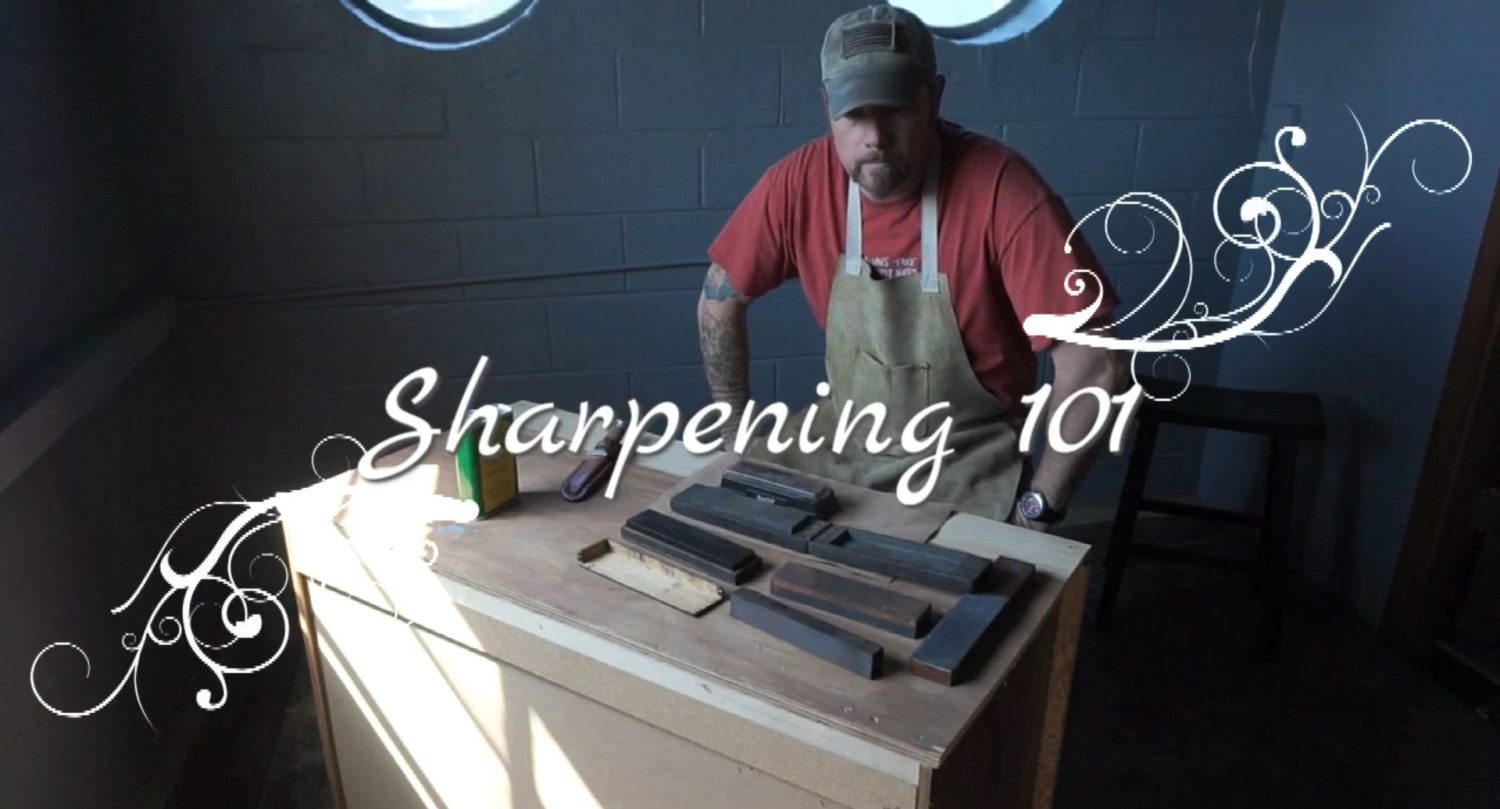A good knife is one of the most important tools in your kit bag and keeping that tool in top shape is crucial. You have heard that a dull knife is more dangerous than a sharp knife. That is simply because a dull knife requires one to apply more pressure during use and using more force behind it sacrifices the control one has of the cutting edge. This is why it is crucial to maintain that sharp cutting edge.
The first piece of advice I have for anyone who asks about sharpening a knife is to NEVER LET IT GET DULL! That being said however, through hard continuous use of a knife, that may not be as practical as it sounds. There are many inventive contraptions, manual and electric, for sharpening knives – some better than others. I have found, however, that the old tried and true method of the oilstones, a leather strop, technique, patience and some elbow grease can produce a superior cutting edge on any type of knife for whatever the purpose.
Most higher end knives that you can buy like Benchmade, T.O.P.S, Zero Tolerance and the like come with a very sharp factory edge which can be polished to a “scary-sharp” edge with a few passes on a leather strop. At this point, during and after periodic normal use, you can maintain that sharp edge by first CAREFULLY checking the blade for any burs and then taking it to the strop before either continued use or storage. The secret is maintaining the correct angle depending on the knife.
Most mass-produced knives have a specific edge angle – usually around 25 to 35 degrees. Sharpening sets by Lansky or GATCO are designed to maintain those specific angles while sharpening by the use of fixed guides. With some practice you can maintain the angle required while sharpening with oilstones. Either way, in order to produce a superior edge, you must be patient. Start by practicing with an old pocketknife or hunting knife before moving on to your “primary investment.”
The first items you will need are, obviously, oil stones. You will need a coarse, a medium and a fine grit stone. Next you will need a light honing oil to not only lubricate the stone but also help to float away the fine metal filings produced from the sharpening process. Next – this is optional but HIGHLY recommended – you will need a leather strop (this is easy to make by acquiring a stiff leather remnant from an arts and craft store, cut it to shape and glue it to a piece of wood – suede side up. Before you use the strop you need to rub into the leather a buffing compound that you can find at any hardware store – sometimes referred to as Jeweler’s Rouge). I know that this may seem a little involved but it is well worth it when you can shave your face with your K-Bar.
If your knife is still relatively sharp, you can probably start with a medium or medium/fine grit stone in order to bring your knife back to sharp without too much time and energy. **Just an aside: if you only have room for one sharpening stone in your kit bag, a Medium Arkansas is your best bet.** if your knife is dull, start with a course grit, and with a generous amount of oil on your stone, place the edge of the blade at approximately 30 degrees onto the stone. Get in really close and look at the knife on the stone. You can see the final bevel of the blade against the stone; angle it so just that part of the knife is touching. This is where the practice and patience comes in. Before you even start moving the knife on the stone look at your hand position and how the knife looks at that angle. This is similar to acquiring your sight picture when shooting. Once you get the feel for it, you never forget it.
Start with gentle circular motions against the stone ensuring to curve upward as you sharpen the tip. After a few minutes carefully feel the opposite side of the edge sliding your finger perpendicular to the blade. Once you feel a rough “wire” or “barb” uniformly along that side of the blade, its time to flip the blade over and begin the same process on the other side. Continue the same process until you feel the “wires” with each successive finer grit stone until you have reached the medium Arkansas.
At this point you want to start “cutting slices” across the stone pushing the blade in the direction of the edge and continuing to maintain the proper angle. Once the barb or wire feels uniform on both sides of the edge you can move up to an even finer grit stone and repeat that process. After that it’s time to go to the leather strop.
Fill the sued leather with buffing compound or jewelers rouge then slide the edge of the blade in the direction of the spine of the knife. Do this to both sides several times in order to polish the edge. CAREFULLY clean off the buffing compound and your knife should be completely sharpened.
At this point you will want to continue to maintain the edge after every use by stropping. It is also a good idea to wipe a thin layer of oil on the blade to prevent corrosion. If your knife has a tanned leather sheath it is wise to not store the blade in the sheath. There is enough moisture content in the leather that will eventually begin to corrode your knife. If you are sharpening kitchen knives one rule of thumb is never put the knife in the dishwasher. Hand wash it, dry it then stow it.
Maintaining your knife’s edge will ensure that your knife will always be ready for use


